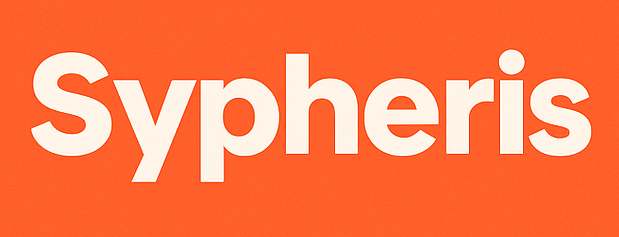Sarah, a dedicated nurse with over $87,000 in student debt, had been meticulously documenting her Public Service Loan Forgiveness (PSLF) qualifying payments for eight years. “I was counting down the months,” she says, her voice wavering. “Then suddenly, the rules changed.” Sarah is just one of nearly 2 million federal student loan borrowers affected by the sweeping legislative changes in 2025. With student loan forgiveness blocked 2025 legislation, millions of borrowers like Sarah are searching for alternative relief options. The May 2025 reconciliation bill has dramatically altered the student loan forgiveness landscape, leaving many wondering what options remain. This guide explores the current state of loan forgiveness programs, what alternatives are still available, and practical next steps for affected borrowers.
Student Loan Forgiveness Update: Recent Legislative Changes
The student loan landscape underwent a seismic shift in May 2025 when the House passed a reconciliation bill with far-reaching implications for borrowers. This latest student loan forgiveness update indicates that several programs have been restricted by new legislation, creating uncertainty for those who had been counting on debt relief.
The May 2025 Reconciliation Bill
The recent student loan forgiveness blocked 2025 reconciliation bill has created uncertainty for borrowers counting on debt relief. The legislation includes several key provisions that directly impact forgiveness programs:
- Proposed repeal of Biden-era regulations governing Borrower Defense to Repayment
- Elimination of Closed School discharges
- Restrictions on Public Service Loan Forgiveness eligibility for medical and dental residents
- Repeal of multiple income-driven repayment plans including ICR, PAYE, and the SAVE Plan
“These changes represent the most significant overhaul of student loan programs in over a decade,” explains Dr. Elena Martinez, student loan policy expert at Georgetown University. “Borrowers need to understand how these changes affect their specific situation and what alternatives remain available.”
Key Programs Affected
The legislation has specifically targeted several popular forgiveness pathways:
- SAVE Plan: Legal challenges have blocked implementation of this newer income-driven repayment plan
- Borrower Defense: New restrictions make it significantly harder to qualify for discharge based on school misconduct
- Closed School Discharge: Eligibility requirements have been tightened, reducing access for many affected students
- Income-Driven Repayment Plans: Several plans face elimination or substantial modification
According to the Department of Education processing statistics, 96% of Income-Driven Repayment applications remain unprocessed, with only 79,349 applications processed in April 2025. This backlog further complicates the situation for borrowers seeking relief.
Public Student Loan Forgiveness: Current Status in 2025
The public student loan forgiveness program continues to be available, though with modified eligibility requirements. This program remains one of the most viable pathways for those working in qualifying public service positions.
PSLF Eligibility 2025: Who Still Qualifies
Despite recent changes, the core PSLF program remains intact for many public servants. Current eligibility requirements include:
- Employment by a qualifying government or non-profit organization
- 120 qualifying monthly payments (10 years) while working full-time
- Loans must be Direct Loans or consolidated into the Direct Loan program
- Payments must be made under a qualifying repayment plan
However, the new legislation has introduced significant changes:
- Medical and dental residents no longer qualify for PSLF
- Stricter employment certification requirements
- More limited definition of qualifying employers
“Documentation is more critical than ever,” says Michael Thompson, student loan advocate. “Borrowers should maintain meticulous records of all payments and employment certifications.”
Student Loan Forgiveness for Nurses: Available Pathways
Many healthcare workers still qualify for public student loan forgiveness despite recent legislative changes. Nurses like Sarah have several potential options:
- Traditional PSLF if employed by qualifying non-profit hospitals
- Nurse Corps Loan Repayment Program (NCLRP), which pays up to 85% of qualified nurses’ unpaid nursing education debt
- State-specific loan repayment assistance programs, which vary by location
“I’m now looking into my state’s repayment assistance program,” Sarah explains. “It’s not as comprehensive as PSLF, but it could still help reduce my debt burden significantly.”
Student Loan Forgiveness Options 2025: What’s Still Available
Despite recent changes, several student loan forgiveness options 2025 remain available for qualified borrowers. Understanding these programs is essential for developing a new repayment strategy.
Here are the three main forgiveness programs that remain active:
- Public Service Loan Forgiveness (PSLF): Still available for most government and non-profit employees after 10 years of qualifying service and payments.
- Teacher Loan Forgiveness: Offers up to $17,500 in forgiveness for teachers who work for five consecutive years in low-income schools or educational service agencies.
- Total and Permanent Disability Discharge: Provides complete loan discharge for borrowers who can document a total and permanent disability.
Student Loan Forgiveness for Teachers: Program Status
The Teacher Loan Forgiveness program remains one of the more stable options in the current environment. To qualify:
- Teach full-time for five consecutive years in a low-income school or educational service agency
- Be a highly qualified teacher
- Have loans that were taken out before the end of your five years of qualifying teaching
“The program offers up to $17,500 in forgiveness for special education teachers and secondary math and science teachers, while other teachers may receive up to $5,000,” notes education policy analyst James Wilson. “This remains unchanged by recent legislation.”
Disability Discharge Student Loans: Qualification Process
The Total and Permanent Disability (TPD) discharge program continues to offer relief for borrowers with qualifying disabilities. Eligibility can be established through:
- VA documentation for veterans with service-connected disabilities
- Social Security Administration determination of disability
- Physician certification of total and permanent disability
“This program remains one of the most straightforward paths to complete loan forgiveness for those who qualify,” explains disability rights advocate Teresa Gonzalez. “The application process has been streamlined in recent years, making it more accessible.”
Loan Forgiveness Application: Process Changes and Requirements
The loan forgiveness application process has changed significantly under the new legislation. Borrowers should carefully review the updated loan forgiveness application requirements before submitting.
Documentation Requirements
With increased scrutiny on forgiveness applications, proper documentation is more important than ever:
- Employment certification forms must be submitted annually for PSLF
- Income documentation for IDR plans must be more comprehensive
- Disability documentation requirements have become more stringent
- All communications with loan servicers should be documented in writing
“We’re seeing a much higher standard of proof being required,” notes student loan attorney David Chen. “Borrowers should maintain digital and physical copies of all relevant documents.”
Application Processing Timelines
The Department of Education is facing significant operational challenges:
- Extended processing times affecting borrower access to affordable repayment options
- Temporary shutdown of some application systems
- Legal challenges causing delays in program implementation
“Borrowers should expect longer processing times and plan accordingly,” advises Chen. “Starting the application process early and following up regularly is essential in the current environment.”
How to Get Student Loan Forgiveness Despite Recent Blocks
Understanding how to get student loan forgiveness in 2025 requires knowledge of the remaining eligible programs and strategic planning. Despite recent blocks, there are still pathways for how to get student loan forgiveness for qualified borrowers.
Income-Driven Repayment Plans After Legislative Changes
While several income-driven repayment plans face elimination, some options remain available:
- Income-Based Repayment (IBR) continues to be available for most federal loan borrowers
- Income-Contingent Repayment (ICR) remains an option for Direct Loan borrowers
- The proposed “Repayment Assistance Plan” may provide new options once implemented
“Borrowers should review their current repayment plan and determine if they need to switch to one of the remaining options,” recommends financial aid expert Maria Johnson. “This may require loan consolidation in some cases.”
Strategic Next Steps for Borrowers
For those affected by the forgiveness blocks, consider these practical steps:
- Review your current loans and repayment status on StudentAid.gov
- Contact your loan servicer to discuss your specific situation and options
- Explore refinancing options if you have stable income and good credit, but be aware that refinancing federal loans with private lenders eliminates access to federal benefits
- Consider state-based forgiveness programs that may be available in your area
- Document all payments and communications with your servicer to protect your rights
“The landscape has changed, but options remain,” says Thompson. “The key is to be proactive and informed about your specific situation.” For more detailed guidance, check our comprehensive forgiveness guide and IDR plans overview.
Frequently Asked Questions About Student Loan Forgiveness in 2025
Is PSLF still available in 2025?
Yes, the Public Service Loan Forgiveness program remains available for most government and non-profit employees. However, medical and dental residents are no longer eligible, and the definition of qualifying employment has been narrowed. Borrowers should verify their employer’s eligibility and maintain careful documentation of all qualifying payments.
What happens if I was counting on a forgiveness program that’s now blocked?
If your planned forgiveness path is no longer available, you should:
- Explore alternative forgiveness programs you might qualify for
- Consider income-driven repayment plans that remain available
- Look into state-based loan assistance programs
- Evaluate refinancing options if you have good credit and stable income
- Contact your loan servicer to discuss your specific situation
Can I still apply for income-driven repayment plans?
Some income-driven repayment plans remain available, including Income-Based Repayment (IBR) and Income-Contingent Repayment (ICR). However, the SAVE Plan and some other options have been blocked or eliminated. Check StudentAid.gov for the most current information on available plans.
What forgiveness options are still available for teachers?
The Teacher Loan Forgiveness program remains intact, offering up to $17,500 in forgiveness for qualified teachers who work in low-income schools for five consecutive years. Teachers may also still qualify for PSLF if they work for qualifying public schools or non-profit educational organizations. Some states also offer teacher-specific loan forgiveness programs, as reported by NPR.
How do I know if I qualify for disability discharge?
You may qualify for Total and Permanent Disability discharge if you can document your disability through:
- VA determination (for veterans)
- Social Security Administration disability determination
- Physician certification of total and permanent disability
The application process and documentation requirements can be found on the Federal Student Aid website.
Moving Forward: Creating a New Student Loan Strategy
The remaining student loan forgiveness options 2025 include programs for public servants, teachers, and disabled borrowers. While the landscape has changed dramatically, understanding your options and taking decisive action can help you navigate these challenging changes.
The Washington Post recently reported that many borrowers are successfully finding alternative paths to managing their student loan debt despite the legislative changes. By staying informed, documenting carefully, and exploring all available options, you can develop a strategy that works for your specific situation.
Remember that student loan policies continue to evolve, and staying updated on changes is crucial. Subscribe to our newsletter for regular updates on student loan forgiveness programs, legislative changes, and new opportunities for borrowers. Our team of experts continuously monitors the student loan landscape to provide you with timely, accurate information that can help you make informed decisions about your student debt.
Disclaimer: Sypheris provides information, not financial advice. The information in this article is for educational purposes only and should not be construed as financial advice. Always consult with a qualified financial professional regarding your specific situation.



